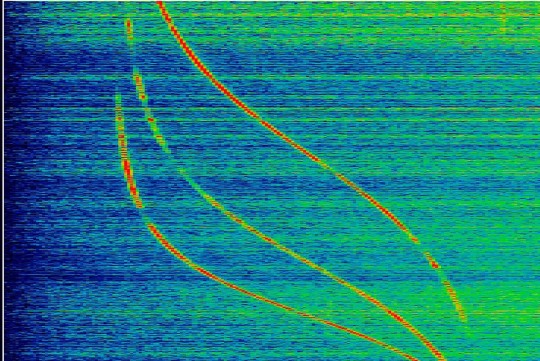
Madeleine Watts On Laura Poitras at the Whitney
In the diary she kept during the autumn that she moved to Berlin, Laura Poitras wrote that she couldn’t sleep at night. When she did, she had nightmares of being detained at military bases, receiving dozens of packages, falling from a great height. She heard the blood moving in her veins. She was afraid. Her laptop kept running out of storage even though her settings indicated that 16GB of space were free. She was never not being watched. She was sure of it. She moved apartments every few months and kept herself away from phones and the internet. “I’ve created my isolation,” she wrote, “so they win. They always win. I can fight all I want and I will lose. I will be destroyed, paranoid, forsaken, unable to sleep, think, love.”
It was under these circumstances that Poitras conceived of the exhibit now occupying the eighth floor of the Whitney in downtown New York, and during this time that she was first contacted by Edward Snowden, who in no small measure turned her life on its edges. Poitras is best known as the director of the Oscar-winning documentary Citizenfour, a real-time chronology of Snowden’s decision to leak damning NSA secrets in June 2013. The Snowden leaks showed just how fully our lives, and our communications with one another, are being watched. The leaks saw Snowden, Poitras and the journalist Glenn Greenwald lauded as heroes by some and branded as traitors by others. Citizenfour was the last film Poitras made in a trilogy of documentaries exploring the aftermath of 9/11, and that film, like all her work, was concerned with the age of terror, tactics of surveillance, drones, the use of torture, targeted killing, the machinations of power in the digital age. The documentation she was provided by Snowden forms much of the work on display in Astro Noise, the artist’s first solo museum exhibition.
Astro Noise surrounds the viewer with this documentation, much of it drawn from the Snowden archive, some of it drawn from Poitras’ years of filmmaking. In an interview with the exhibit’s curator Jay Sanders, Poitras says “there’s a lot of conceptual art that talks about violence or power in an intellectual way, but I want to expand people’s understanding emotionally.” This is political art trying not to inform you or cause you to rise up in protest. Poitras wants to make you feel something.
Because at what point does hearing and bearing the weight of the Snowden archive, the knowledge we all have of just how terrifying is the war on terror, how widespread and invasive the surveillance state, switch from...
You have reached your article limit
Sign up for a digital subscription and continue reading all new issues, plus our entire archives, for just $1.50/month.
Already a subscriber? Sign in




